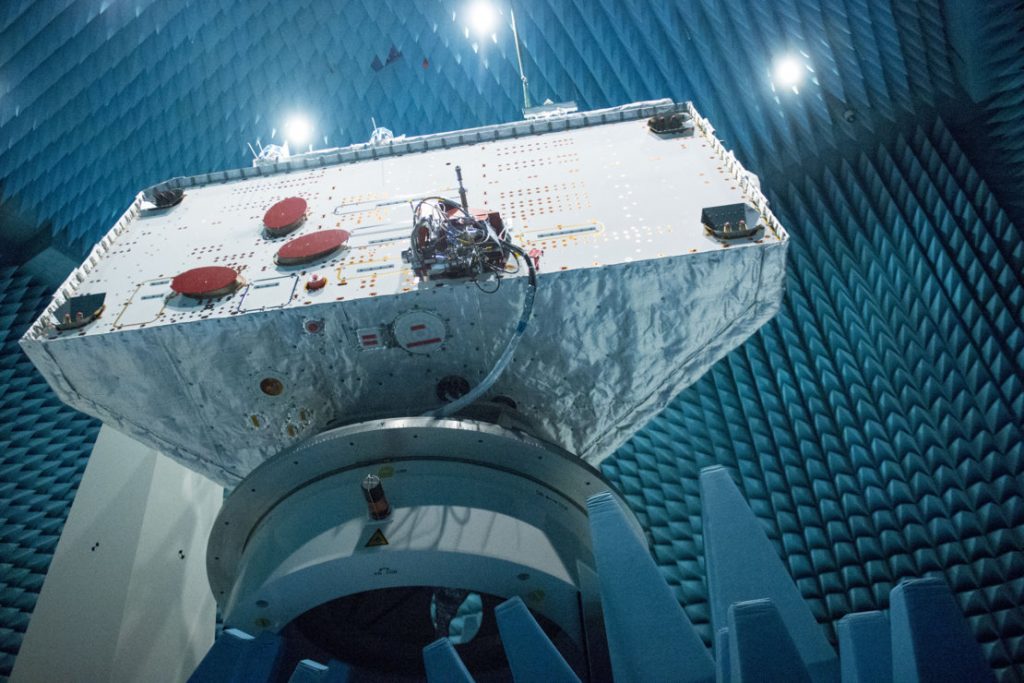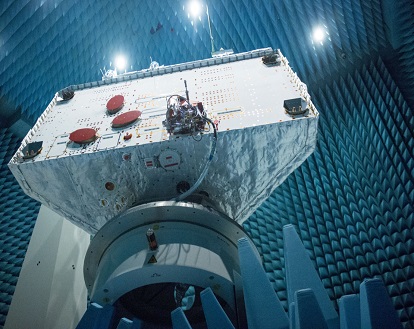ESA’s Mercury orbiter underwent electromagnetic compatibility, radiated emission and susceptibility testing last month inside the Maxwell chamber of ESA’s ESTEC Test Centre in Noordwijk, the Netherlands.
If the orbiter of the BepiColombo mission seems to stand at an unusual angle above its test chamber floor, that’s because it does – intentionally so.
“We are performing two types of compatibility testing,” explained Marco Gaido, assembly, integration and test manager for BepiColombo. “First, we are checking the craft is electrically compatible with the electrical field generated by the Ariane 5 launcher that will deliver it into orbit, with no possibility of interference with BepiColombo’s receivers.
“Secondly, we are testing if there is any risk of incompatibility between the different subsystems of the spacecraft itself when it orbits Mercury. In particular, we want to check that its trio of antennas on top can communicate properly with Earth. The orbiter was positioned to allow deployment of its medium-gain antenna in terrestrial gravity. The high-gain antenna reflector meanwhile was deployed in a worst-case position, supported by a dedicated fixture.
ESA’s Mercury Planetary Orbiter will be launched to Mercury together with Japan’s Mercury Magnetospheric Orbiter aboard an ESA-built carrier spacecraft, the Mercury Transfer Module. This entire three-module BepiColombo stack will undergo similar testing at ESTEC.
For more, click here.

